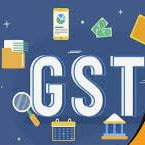Registration for Government Deductors in GST
Before we proceed to be aware of the process of being registered for GST, let us have a look upon the course components of the workshop, "Tender Process, e-Tendering and Goods and Services Tax (GST) for Deductors".
Tender Process, e-Tendering and GST for Deductors:
I received a call to provide guidelines on registration of
Government organizations for Goods and Services Tax Act today. I usually be
invited to deliver sessions on this issue. In order to make a crispy and easy
to understand process, an idea came in mind to let it note down in the shape of
an article. I hope you will be benefited from this write-up.
GSTIN for Deductors in Government:
For all Government Departments and organization, it is not
necessary to get register for Goods and Services Tax Identification Number
(GSTIN). The seller’s GST registration is mandatory for persons with annual
turnover of above Rs. 40 Lacs and the Deductor’s GST registration is mandatory
if an organization is making payment in contract worth above Rs. 2.5 Lacs.
GST Registration:
Like PAN and TAN, the GST registration is also very easy. It
comprises 15 digits number issued by the tax authorities to monitor the
compliance of Goods and Services Tax Act. For GST registration, a lot of
documents should be ready in hand firstly:
(a) Checklist of required documents:
For Sellers’
registration:
For Deductors’
Registration:
PAN Card, Aadhaar Card, Photograph of Drawing and Disbursing
Officer / Head of Office, Banking Details, and Address Proof. For banking
details, a copy of cancelled cheque is required and for address proof, any
document like property tax receipt / Municipal Tax Copy / Electricity Bill /
Rent Agreement.
Why to register for Goods
and Services Tax (GST) in Government Organizations:
The Government Organizations including local authorities are
liable to pay tax on supply of non-exempt services as per directions provided
in Section 7 (2b) of GST Act. For example, on the supplies or contact worth
more than Rs. 2.5 Lacs, it is required to deduct TDS on GST as per the provisions
of reverse charge mechanism.
Constitutional Provisions
for enforcing GST:
Article 154 of Indian Constitution states that the Governor of
each State will exercise the Taxation in the State. The Section 3 of GST Act,
the Governor will exercise the Act through the officers subordinate to him in
accordance with the Constitution. The Finance Department of Haryana and other
State Government took the responsibility of compliance of all provisions of GST
Act in the State Government Departments in the name of Governor.
TDS on GST:
As per section 51 of the GST
Act, 2017, the TDS on GST is deducted at the rate of one per cent on account of CGST and one percent on account
of SGST from the payment made or credited to the supplier where the total value
of the supply under a contract exceeds two lakh and fifty thousand rupees
(excluding tax payable under the GST Acts). Further, the deductor shall remit
the deducted amount to the Government and is also required to furnish a certificate
to the deductee by mentioning the details of the amount deducted and payment of
such deducted amount.
Process of Registration
for GST for Deductors:
(a) Go to https://gst.gov.in
(b) Use “New Registration” Command in Services
è Registration.
(c) Select ‘Tax
Deductor’ in the box “I am a”.
(d) Give your TAN number, no need to
give PAN number of DDO.
(e) Enter the State, District, and Name
of Deductor (DDO), email and mobile number to confirm, verify by the OTP
received.
(f) TRN:
(g) Now again
go to Services èRegistration and Use ‘TRN’ to proceed.
(h) Give Business Details
After submitted OTPs, a Temporary
Reference Number (TRN) will be provided and it is mandatory to submit
the required documents in Part-B within 15 days of issue of the TRN.
aAs desired by the portal i.e. Details of DDOs,
Type of Government, PAN number, Aadhar Number (not mandatory), Residential Address
of DDO, Photograph of DDO etc. Thereafter it will also ask to provide the
office address details with uploading of address proof. Finally, it will ask to
verify either through DSC or EVC.
·
(i) After giving all details, the
application will be processed and 15 digit GSTIN will be generated.
Copyright © 2020 Dr. Lalit
Kumar. All rights reserved.




















